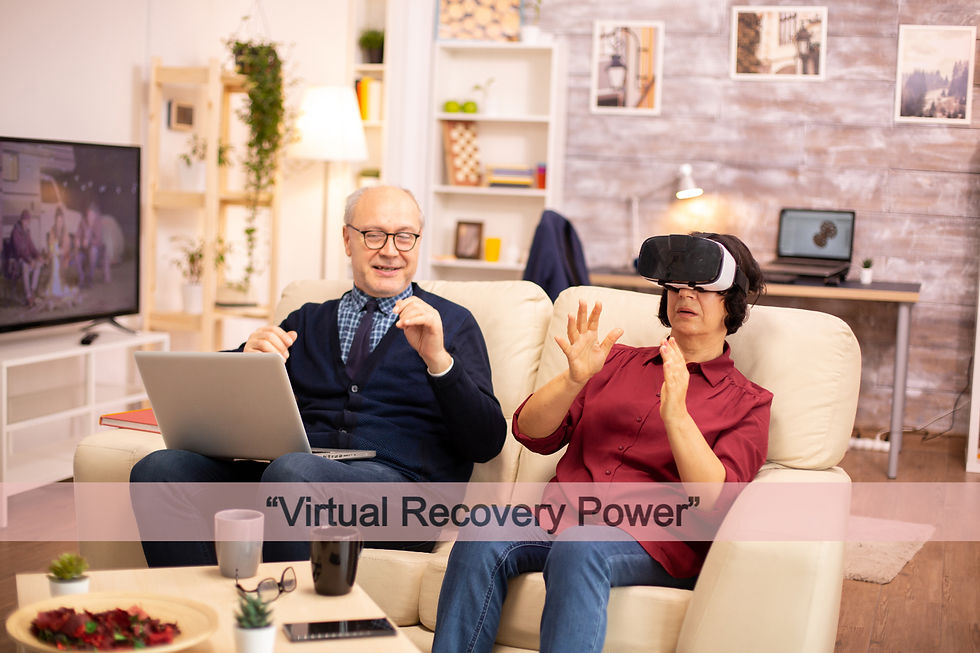Virtual Reality-Based Rehab for Stroke Survivors
- Admin
- Sep 12
- 2 min read

Introduction: www.youtube.com/kneetiegorungoStroke remains one of the leading causes of long-term disability worldwide, often leaving survivors with impaired motor skills, speech challenges, and reduced independence. Traditional rehabilitation techniques such as physical therapy and occupational therapy play a crucial role in recovery. However, with the advancement of digital health technologies, Virtual Reality (VR)-based rehabilitation has emerged as a transformative solution offering immersive, engaging, and effective recovery experiences.
The Power of Immersion in Rehabilitation:Virtual reality creates interactive environments that allow stroke survivors to practice movements in real-time. Instead of repetitive, often monotonous physical therapy exercises, VR provides stimulating scenarios like walking through a virtual park, catching virtual objects, or performing daily activities in a safe simulated space. This immersive approach increases patient motivation, encourages consistent practice, and helps retrain the brain through neuroplasticity—the ability of the brain to reorganize itself after injury.
Personalized and Adaptive Therapy:One of the greatest strengths of VR rehabilitation is its adaptability. Therapy programs can be customized to match each patient’s specific limitations and progress levels. For instance, a patient with limited arm movement can practice reaching exercises that gradually increase in difficulty. VR platforms can also record performance data in real time, providing therapists with valuable insights into patient progress and allowing for personalized adjustments.
Bridging the Gap Between Hospital and Home:Traditionally, stroke rehabilitation often required frequent hospital visits, which could be costly and inconvenient for families. VR technology has the potential to bridge this gap by offering at-home therapy through portable VR headsets and secure applications. Patients can continue their rehabilitation outside clinical settings, while therapists monitor progress remotely. This not only reduces hospital dependence but also makes recovery more accessible for those in remote or underserved regions.
Enhancing Motivation and Emotional Wellbeing:Beyond physical recovery, VR-based rehab also plays a role in psychological healing. The immersive and game-like nature of VR reduces the frustration commonly associated with recovery exercises. Patients report higher satisfaction, lower stress levels, and greater engagement. These positive emotional outcomes often accelerate physical progress, creating a reinforcing cycle of improvement.
Conclusion:Virtual reality-based rehabilitation is revolutionizing stroke recovery by combining clinical science with immersive technology. Its ability to offer adaptive therapy, enhance motivation, and bring therapy into the home environment makes it a powerful tool for restoring independence and quality of life for survivors. As VR technology becomes more affordable and widespread, it has the potential to redefine how we approach post-stroke care and long-term recovery.
(The domain www.dubaitelemedicine.com is for sale. Please contact us at www.kneetie.com#KneeTie #Stroke #youtube/kneetiegorungo #DubaiTelemedicine )




















Comments